The Polynesian Cultural Center is honored to have a strong connection with the beautiful island nation of the Cook Islands. In 2017, 2018, and 2019 we welcomed a delegation of performers from the Cook Islands to spend their summer sharing their culture and history at the Polynesian Cultural Center. We look forward to welcoming them back again in the future.
In the meantime, beginning this last May, a direct flight to the Cook Islands from O‘ahu, Hawaiʻi has become available. This is a great opportunity for anyone looking to visit these magical islands. For the many Cook Islanders currently living in Hawai’i, it is a true blessing. With this flight, families are now able to reconnect through direct, affordable flights.
This week, we are happy to share a blog by Nina Jones, Lead Blogger, who flew on the maiden flight in May to spend two weeks exploring these fantastic islands.
A brief historical overview
The Cook Islands Tourism website describes their islands as “An unspoiled paradise, complete with white sand beaches, blue lagoons, and lush green mountains”.
The name, obviously, comes from the fact that Captain Cook famously visited the islands at least twice. But their history reaches far earlier than this event and is filled with ingenuity, exploration, and the ability to adapt.
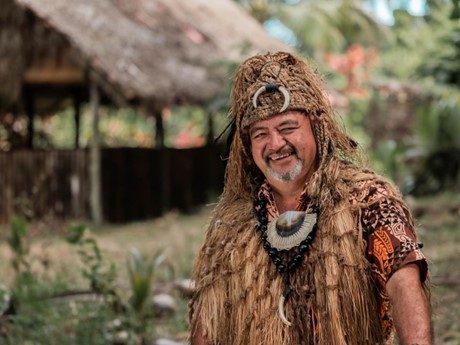
Danny Materoa, a familiar face on Raratonga, works with fellow islanders to preserve the ancient culture of his people through music, dance and education. Image courtesy of the Cook Islands Tourism website.
It is generally believed that Polynesian seafarers discovered these islands around the 6th century. By 1,500 AD, Māori seafarers had established a regular route between the Cook Islands and Aotearoa (later to be renamed New Zealand.) In the ensuing decades, strong social and cultural ties between both French Polynesia and New Zealand were established and can be seen today. They have been self-governing since 1965. The language is reflective of the Māori culture – but pronunciations can vary from island to island.
Unique islands
The Cook Islands consist of 15 individual islands. The two most visited islands are Rarotonga, the “main island” and Aitutaki, which has what many say is one of the top lagoons in the world. We have to say, we agree wholeheartedly with that! For a really unique experience, another island to consider is Atiu (rhymes with AH’-choo). Both Aitutaki and Atiu require booking flights with Air Raratonga, or having a really great friend with an amazing boat (and lots of time).
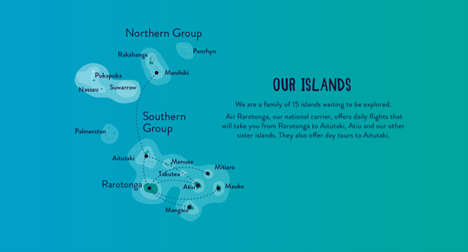
Image courtesy of the Cook Island Tourism website.
Rarotonga – the Center of Cook Island Life
The beating heart of our little paradise will capture yours. Rarotonga, the hub of the Cook Islands, has so much to see and do, yet remains unspoilt. No traffic lights, no McDonald’s and no building taller than the highest coconut tree.

The main town, Avaru, as seen from the docks
The largest island, yet only 32km/20 miles in circumference, Rarotonga, is the center of the Cook Islands government and commerce, It also is the site of the main airport, which currently accepts regular flights from New Zealand, Tahiti, and just recently the United States and Australia.
The island is unique in many ways. It has the largest population by far, at 10,700. Residences are scattered around the coastline and up into beautiful valleys. Most hotels and lodges are found along its main road that follows pleasant beaches found all the way around the island.

Muri Beach is excellent for kayaking, paddleboarding and swimming.
Activities are plentiful, including deep sea fishing, diving, a multitude of watersports, tours. Looking for the unusual? How about a unique opportunity to spend the evening sharing food and stories with local families? Locals call it a Progressive Dinner.
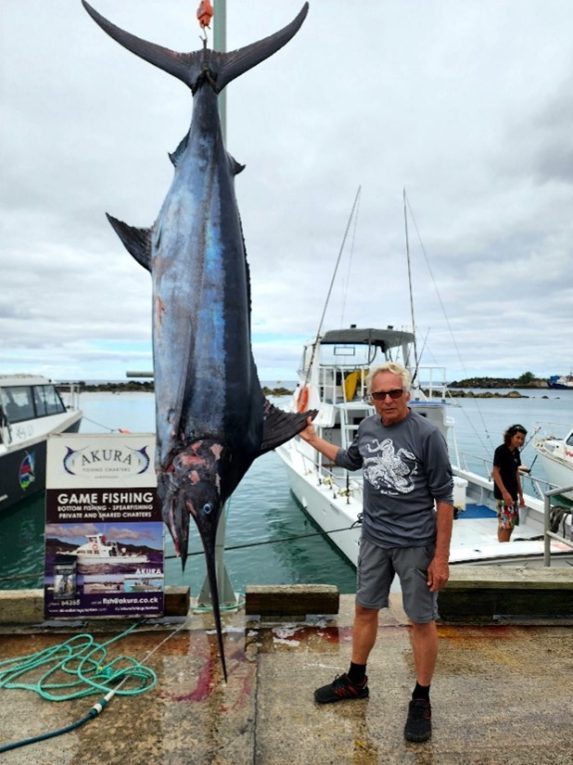
A good day fishing (380 lb stripped marlin caught off the northern coast of Rarotonga)
Exploring is easy with their bus system, which runs every hour with one bus route heading clockwise around the island and the other counterclockwise. As of 2023, the cost is $5.00 (NZ$) per ride or you can purchase a punch card for 10 rides at $30(NZ$).

Image courtesy of Cook Island Tourism website
You could also opt to rent a bike or motor scooter from one of the many vendors, some with the option of delivering them directly to your hotel. It is important to note that Cook Island traffic is slow and respectful. Wearing a helmet is strictly required for both, and you must present a motorcycle license when renting a motor scooter. If you do not have one, don’t worry. Simply head to the main police station in the downtown area. There you can take a test, pay a minimal fee and be on your way.

Saturday morning Punanga Nui Market
The main city of Avarua has many restaurants – but wherever you stay on the island you should find a choice of places to eat. Even the local grocery stores carry selections of delicious handmade meals. There is a popular night market in the Muri area that runs on specific days of the week. For a wide selection of food, souvenirs, clothing, jewelry, and crafts, you may want to make your way to the popular Punanga Nui Market. It is held on Saturday, close to the wharf in Avarua. In both cases, these vendors accept New Zealand money only, so please be prepared.
Aitutaki
Often called “Heaven on Earth”, Aitutaki is a place to enjoy pure paradise.
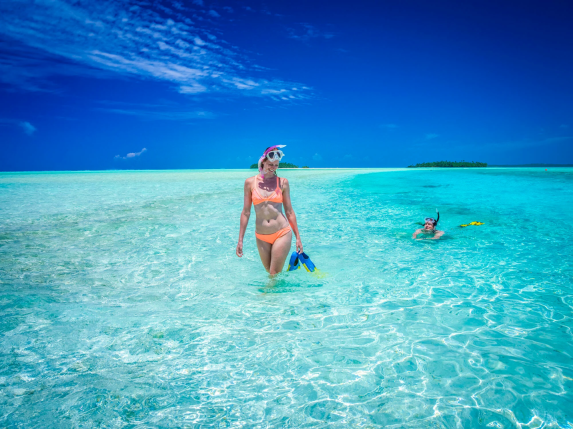
Image courtesy of Cook Island Tourism Website
The crown jewel of the Cook Islands is this unique island famous for having one of the most pristine lagoons in the world. It begins with a solid mass of land on the west end. It then curls around towards the northeast, with a series of small islands (called Moti) that spread out across the east end and head south. This formation, supported by an expansive barrier reef, creates the perfect conditions for a massive lagoon made of powder soft white sand covered with sparkling turquoise water. In many places, the lagoon floor is so shallow that you can walk across it to explore nearby uninhabited islands.
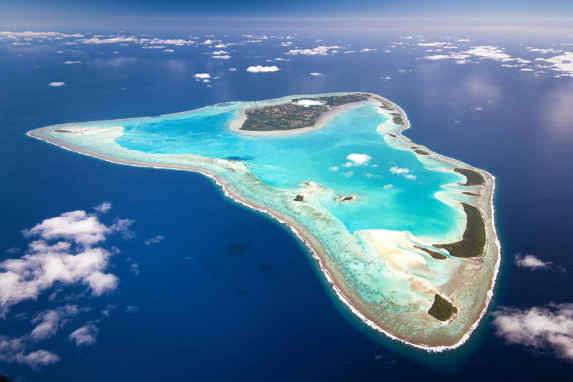
Image courtesy of Cook Island Tourism Website
The main island is made up of rolling hills of green tropical plants and trees. The population of approximately 1,800 lives mostly in and around the small town of Arutonga. Life here is laid back, with most citizens working in tourism, farming, and fishing.
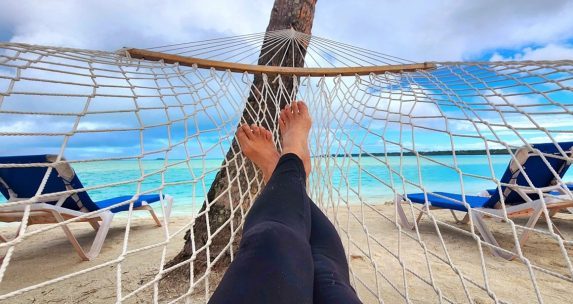
Chillin’ on a white sandy beach on Aitutaki
A Simpler Life in the Island of Atiu
There are a few places left in the world like Atiu, an island over 8 million years old – ancient, remote, and lush with dense rainforests and coastal bush.
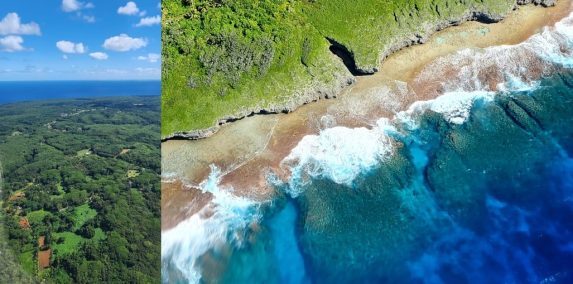
The sites you will see as you approach Atiu
If you would like a truly unique experience, hop on a propeller plane and head 50 minutes northeast to the little island of Atiu. You’ll notice immediately that you are in a whole new world. The population of this small island dips under 400. Unlike the other islands in the area, Atiu’s communities are placed next to each other towards the middle of the island surrounded by farms, grass, and jungles.

An Atiu roadblock
Some may call the conditions primitive. Others call it heaven. It’s a chance to dive into the culture and familiarity of the Cook Islands. Everyone waves and with only a small handful of people arriving and leaving daily, everyone knows you are their special guest for the next few days.
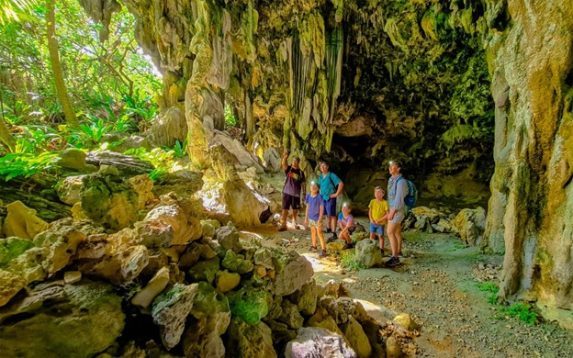
Image courtesy of Cook Island Tourism Website
There is a freedom on this island, where you can grab your scooter and explore every beach, backroad, and village. Guided tours are available from such locals as “Birdman George” who will take you out to discover some of the beautiful birds that share this island paradise. Or maybe you’d like to explore an underground cave carved out of the hard coral rock with an underground pool and birds that have adapted to navigating in the dark (guide required).
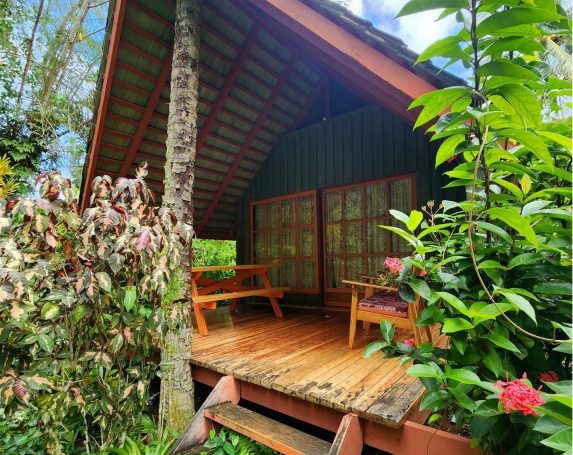
Atui Villas, one of the few lodgings on Atui, offers cabins set in a beautifully kept garden
Much of the lodging available may remind you of childhood summer camps. It’s not fussy. It’s certainly not modern. But it will give you the opportunity to connect with fellow travelers and locals on a deeper level. It also provides you the opportunity to disconnect from the electronic leashes holding you down. It could be the most fun you’ve had in years.
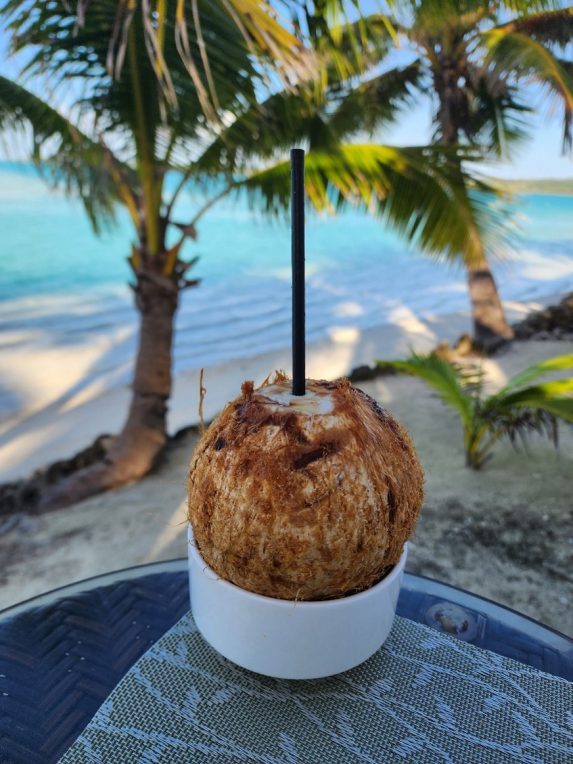
A chilled coconut is the perfect refreshment on a sunny day
Things to know on the Cook Islands
After reading this blog, we hope that you are ready to explore the beautiful Cook Islands. Here are just a few final points to help you plan for the trip of a lifetime:
- The Cook Islands are due south of Hawaiʻi. The direct flight takes approximately 6 hours. As of the summer of 2023, there is one flight through Hawaiian Air that leaves on a Saturday afternoon. That same plane turns around and flies back to Oʻahu Sunday evening at approximately 11:30pm. Therefore, you need to plan for at least a one week stay. My husband and I stayed for two, and we are so glad we did!
- There is no date or time change for travelers from Hawaiʻi.
- Most guests visiting the Cook Islands come from New Zealand. Great people, always ready for an adventure or party. You’ll find yourself meeting up with some of them over and over again as you attend various activities. Feel free to start up a conversation, share a taxi, or get some recommendations based on the other tourist’s experiences.
- Being that the Cook Islands work in partnership with New Zealand, it is again important to mention that you will need to use New Zealand forms of money. Aside from some fun local coins, most cash and coins come straight from New Zealand. You will find automatic cash machines throughout Rarotonga. Not so much anywhere else – so keep enough to pay your expenses if you travel to some of the other islands.
- The same holds true for personal supplies. For instance, I could not find one tube of lip balm on my trip. So, plan carefully.
- People drive on the left side of the street on the Cook Islands, and as mentioned earlier – they drive slowly and are considerate of people, children, and the many dogs you will find on Rarotonga. This is not a place to test the rules. Remember, you are on vacation. Take it easy.
Looking for a detailed article about the remote Island of Atiu?

Fun facts await you in this blog regarding the Dogs of the Cook Islands.
Bio of Nina S. Jones, Blogger for the Polynesian Culture Center

Nina Jones, a mainland gal from way back, is now a transplanted Islander. With her husband of over 45 years, she has lived in Laie since volunteering at the Polynesian Cultural Center from 2014 – 2016. She now serves as the blog manager for the Center. Her blogs focus on the Polynesian history, beliefs, practices and oh so delicious food! Polynesia is not just a place to visit, it is a way to live, and she is very honored to be able to be a part of their amazing world.

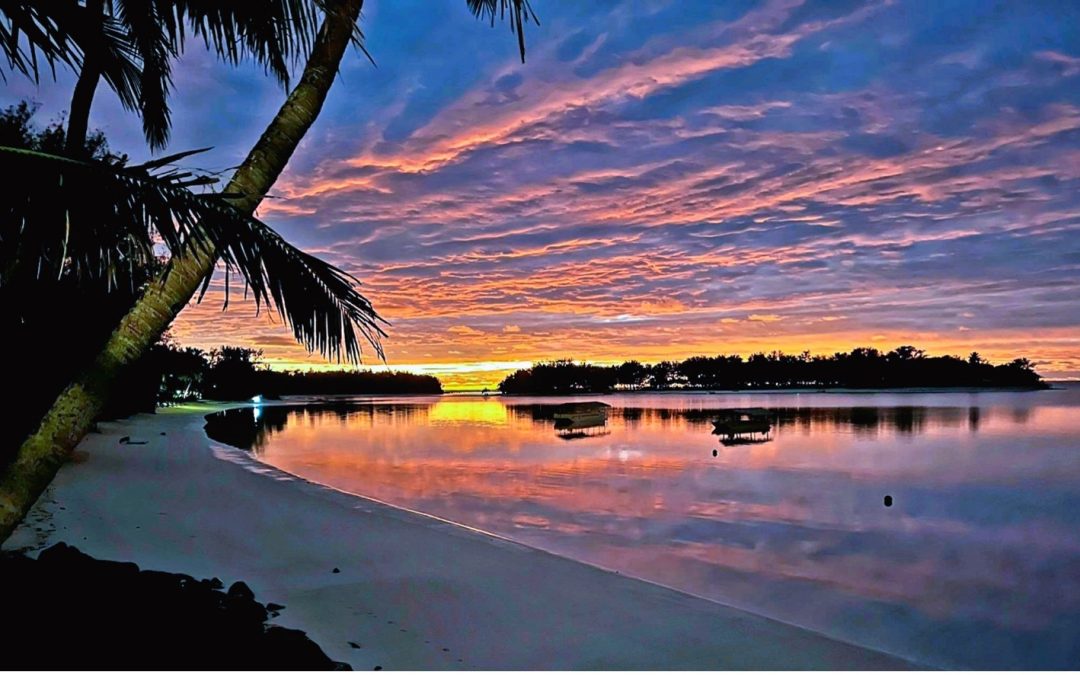
Recent Comments